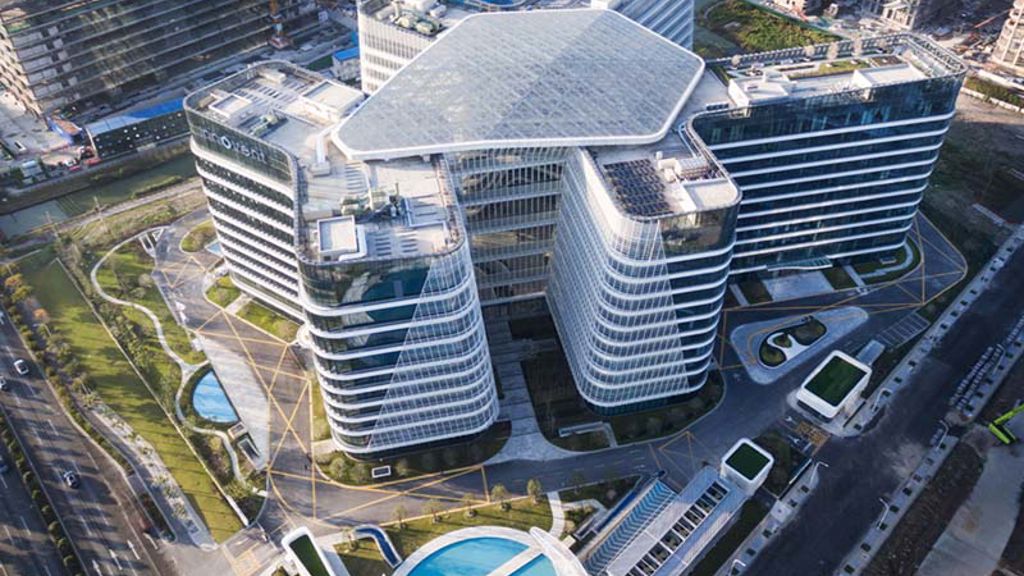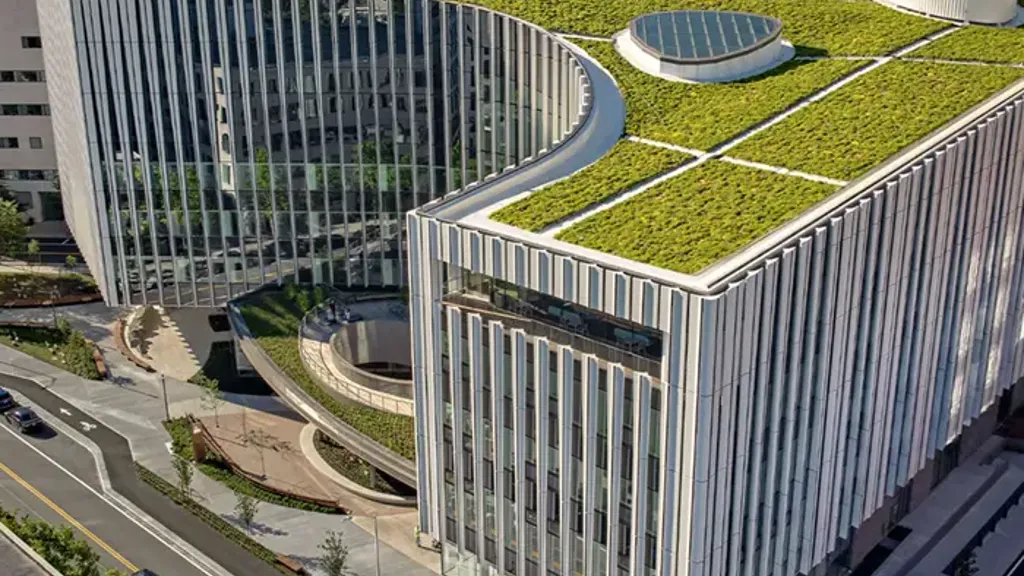Sustainable science
Arup uses a comprehensive approach to sustainable science, considering not only environmental impact but all components of environmental, social, and corporate governance, including safety and employee wellbeing.

This assists in minimising your carbon footprint while maintaining efficient operations across the laboratory and associated spaces.
Two vital aspects of sustainable science design are energy and water efficiency. Laboratories typically consume significantly more energy than other buildings due to specialised factors including containment devices, heat-generating equipment and 24-hour access requirements. We examine energy and water needs and identify opportunities for improving efficiency while maintaining health and safety standards. One key consideration is energy efficiency, achieved using advanced insulation, efficient lighting systems, and state-of-the-art HVAC systems.
A truly sustainable laboratory design also prioritises the health and wellbeing of the lab’s tenants. This can include optimisation of natural lighting, promoting indoor air quality through efficient ventilation systems, and incorporating green spaces within or around the laboratory facility to enhance productivity and wellbeing.
Collaboration across project design plays a crucial role in development of innovative, sustainable solutions. Our designs integrate green certifications and standards, such as LEED (Leadership in Energy and Environmental Design) and BREEAM (Building Research Establishment Environmental Assessment Method) standards, which provide guidelines and benchmarks for sustainable laboratory design, construction and operation.
The building houses a 240,000ft2 state-of-the-art laboratory and a psychology building connected by an atrium, as well as research space, an imaging facility, an animal care facility, instructional spaces, faculty offices, gathering spaces, and a below grade pedestrian tunnel linking it to the Icahn Laboratory. Arup provided a range of key services to drive the completion of the complex including structural, mechanical, and electrical engineering, as well as acoustics, IT and communications, LEED certification consulting, and lighting design.
The complex includes a range of features that allow for energy efficiency. Natural light is maximised throughout the building while exterior shading devices reduce the amount of cooling required. A chilled beam design reduces energy consumption and permits room-by-room temperature control. The high-performance glass façade and exterior shading devices reduce the amount of cooling required in the building by limiting solar gain. These conservation measures in turn provide a 15% energy cost reduction and support the complex in its efforts to attain LEED Silver status.
Sustainability
Arup’s engineers introduced a number of measures that helped the university meet its goal of being a LEED Silver equivalent building. Energy conservation measures will provide a 15% energy cost reduction above ASHRAE 90.1, 2004. The laboratory animal hold rooms utilise an intelligent air monitoring technology that saves energy by varying ventilation levels based on the contaminants detected in the air. Energy-efficient fume hoods use variable exhaust extraction rates based on occupancy while daylight harvesting automatically controls light levels when daylight is sufficient. Low-flow fixtures, rainwater collection, and a greywater system reduce potable water usage by 44%.
Get in touch with our team
Explore
Find out more about how our services can support you:
Projects
Explore more science projects

Bringing science and community together under one roof
Innovent Global R&D Center, Mainland China

Creating a collaborative environment for the premier particle physics laboratory in the United States
Fermilab Helen Edwards Engineering Research Center, USA

A space for life-saving research
Ragon Institute, USA

Designing high-performance laboratory infrastructure to foster research collaboration
Pacific Northwest National Laboratory Grid Storage Launchpad (GSL), USA
Laboratories & research
The modern lab remains central to scientific research, development and discovery. Our approach to designing these environments reflects that importance. We prioritise cost efficiency, sustainability, resilience, adaptability and enhanced environmental performance. The goal is to provide a collaborative and inspiring workspace for scientists.





